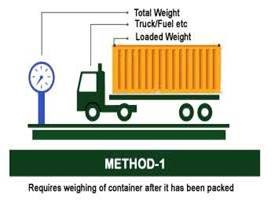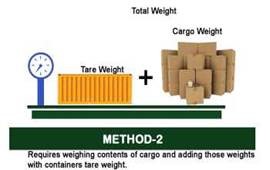What is Verified Gross Mass?
Effective from 1st July 2016, with the SOLAS (Safety of Life at Sea) amendment covering container weighing regulations, a packed container will no longer be allowed to be loaded on board vessels unless its Verified Gross Mass (VGM) has been provided by the shipper to the ocean carriers and/or port terminal representatives prior to the load list cut-off date.
The new regulation was adopted by the IMO (International Maritime Organization) to increase maritime safety and reduce the dangers to cargo, containers, and all those involved in container transport throughout the supply chain.
The Verified Gross Mass (VGM) is the weight of the cargo including dunnage and bracing plus the tare weight of the container carrying this cargo. SOLAS requires the shipper to provide VGM in a “shipping document”, either as part of the shipping instruction or in a separate communication, before vessel loading.
The shipper is obliged to verify the gross mass of the containers carrying their cargo by either of two permissible weighing methods before these containers can be loaded on a vessel.
METHOD 1

Total weight = TRUCK, FUEL, ETC…. + LOADED WEIGHT INCLUDING THE CONATNIER WEIGHT
In other words, requires weighing the container after it has been packed.
METHOD 2

Total Weight = GOODS (PACKING, ETC….) + CONTANIER TARE WEIGHT AS INDICATED ON THE DOOR END OF THE CONAINER.
In other words, requires weighing all the cargo and contents of the container and adding those weights to the container’s tare weight.

